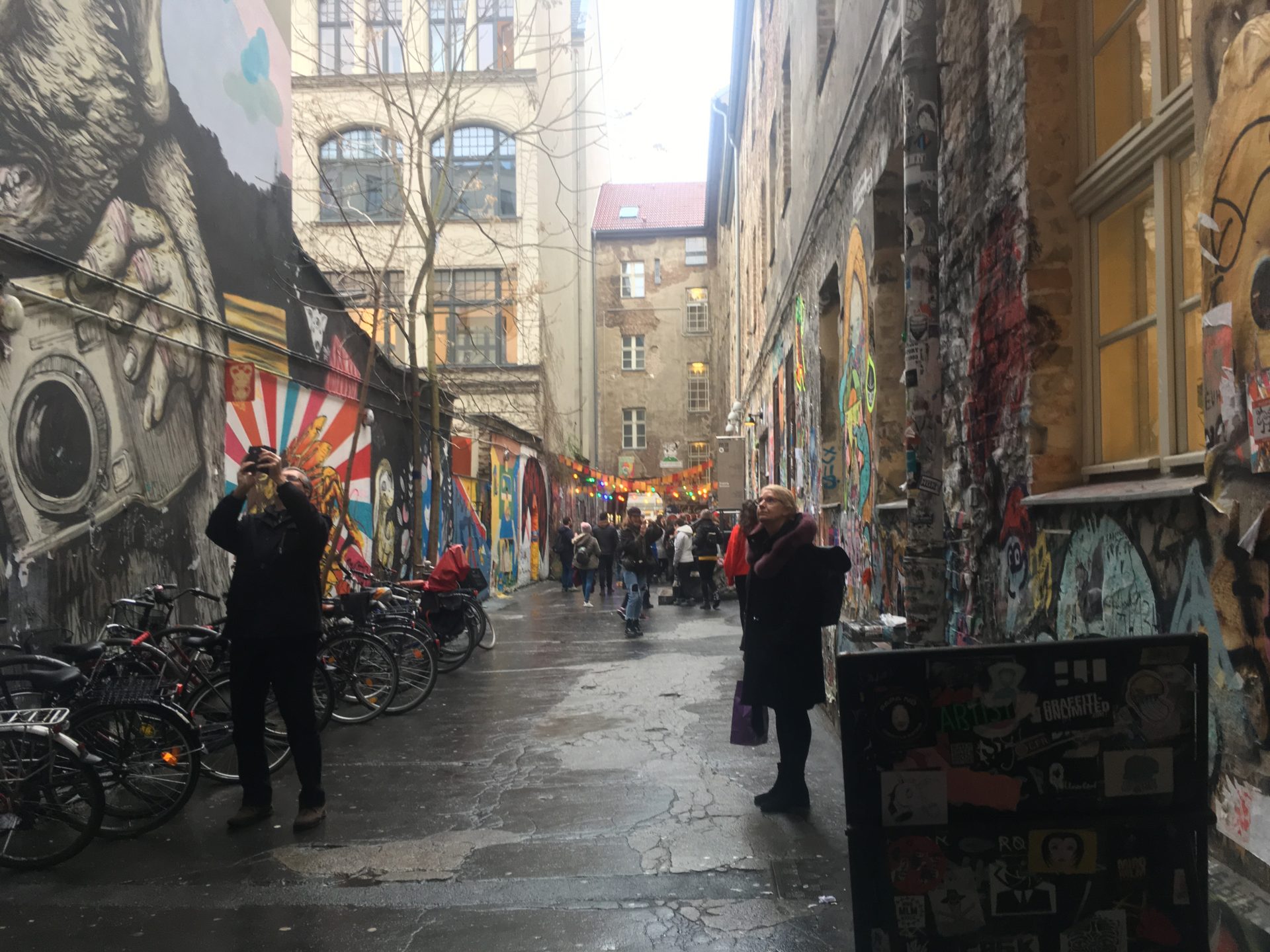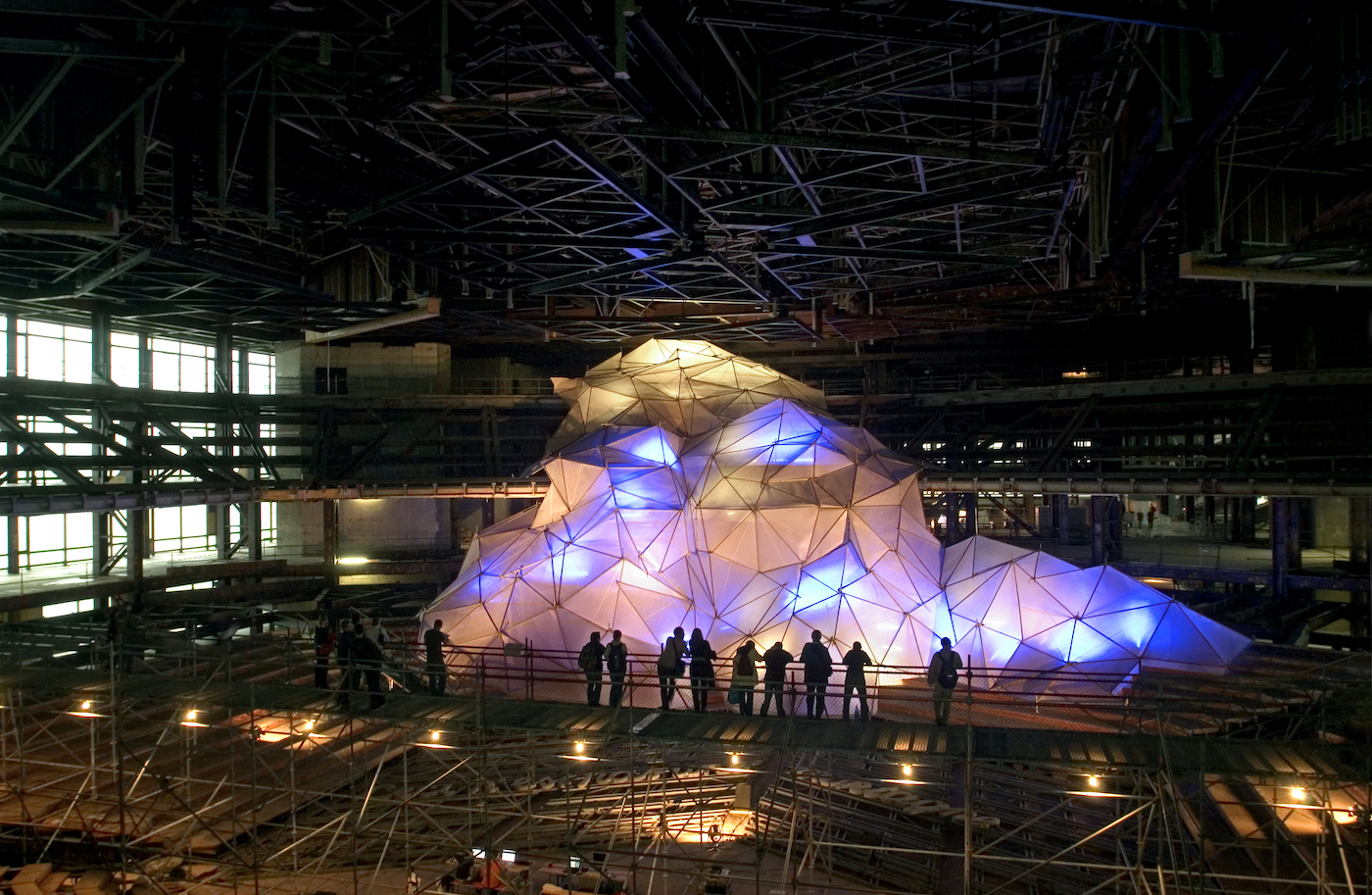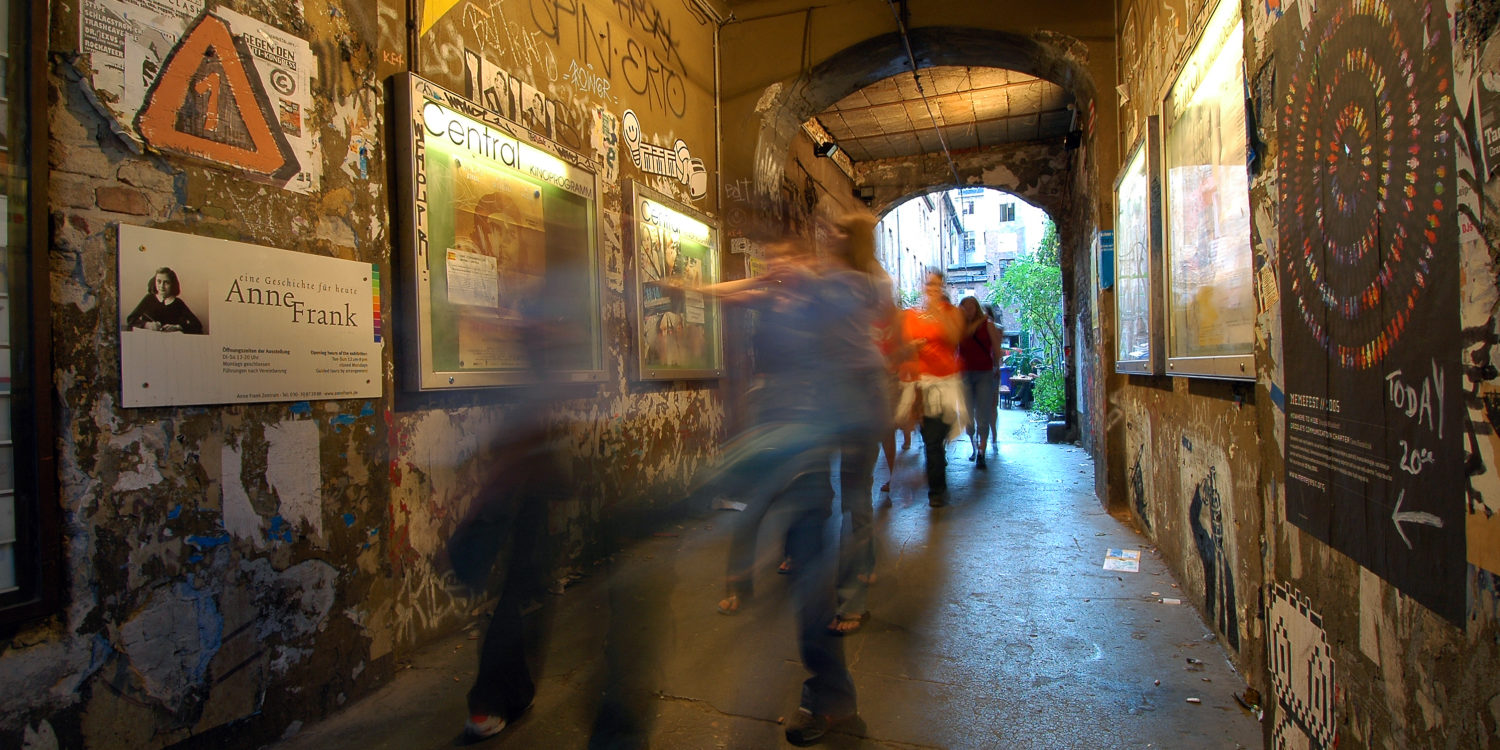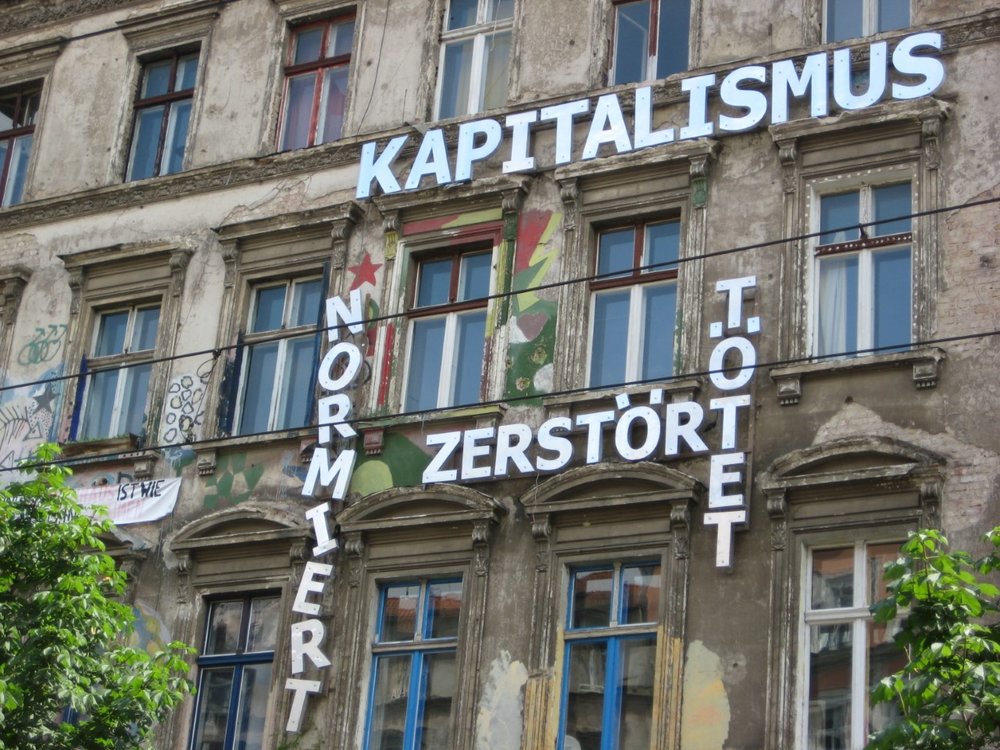A native of Brazil, architectural historian Daniela Sandler was able to observe the potential for gentrification in the Berlin of the early 2000s more readily than many surrounding her. Some of her intuition came from her training in both architecture and architectural history and from growing up in São Paulo, where state-led regeneration was transforming the city. Sandler made careful study of the grassroots practices of ‘intentional dilapidation’ she saw in Berlin and linked them as a movement that countered the (soon to be rampant) redevelopment of the German capital in her book Counterpreservation: Architectural Decay in Berlin Since 1989. While it was published in 2016, reflecting on more than a decade of contemporary history, this interview takes full stock of the rapid physical change and rising costs experienced by Berlin residents, and the city’s place as a hub of the creative industry and tourism. As Sandler acknowledges, the radical communes, historical installations, and ephemeral art projects profiled in her book are now almost all lost or commodified, relics to a cultural and economic battle that has been won by the market forces of the 21st century.
How did you become interested in topics like squatting and activism, and how you see those actions as the study of architectural historians?
I arrived in Berlin for my dissertation research with a very formal project, partly because I was kind of traumatized by studying informal architecture in São Paulo and because my advisors didn’t understand what I was trying to do. It was supposed to be a design project but I was interested in what at the time I called popular culture, for lack of a better word, going into the streets of São Paulo. In Berlin, I was going to look at what the preservation policies of Berlin were doing in terms of building an identity and a history for the city after reunification. I was looking at official preservation policies and private development in terms of renovation and adaptive reuse. At the same time, part of my research was just taking the bus and the tram and the subway and walking. What I started to see on the street was this other way that people were building a sense of identity and history and transforming their environment. It’s not official, it’s not on the books, but it’s real. It changed the expectations that people have about their city [and] planted the seeds for changes in the future.
The example that became my book was how people are using these buildings that were dilapidated in a very intentional way. People wanted to be in a building that looks like it’s falling apart. To me that was something that was almost bizarre, coming from a context like São Paulo where, especially at that time, people are not proud to live in a place that’s dilapidated. If they have any resources, even if they’re very poor, they will complete the facade. I also realized that nobody had written about it, and it’s not an official policy, except the Haus Schwarzenberg, [which] eventually became listed in the Denkmalliste (monument registry). The reason why they listed it as a protected structure is precisely because of the dilapidation of the facade, but that was a choice of artists who had been in the building since the ’90s. Later some preservationists — they must be enlightened! — recognized it and included it, but it is kind of the exception.
Official preservation and official architecture are always going to be seen. But that informal part was really something that people weren’t conceptualizing, especially at the time. It’s not that different from when we studied the vernacular. I think that these practices — like squatting in Berlin or grassroots urbanism in São Paulo, or tactical urbanism elsewhere — [are] a new vernacular. Using the theoretical framework of the vernacular to understand it might make it a little more acceptable.
Can you introduce the concept of counterpreservation?
Counterpreservation is an approach not to ruins themselves, but to ruination and the process of dilapidation, as this approach intentionally incorporates that dilapidation and the passage of time as a way of treating the building, site, or landscape. On a practical level, it means not taking active measures, or taking very limited measures, to restore or even conserve — just enough so that it doesn’t fall on your head. It also means finding ways to showcase and display the form of ruination. On the term itself, I was very inspired at the time by James Young’s Counter-Monument, partly because it was taking on this alternative approach to memory and monuments that is very self-critical and open-ended. It doesn’t try to give you a packaged narrative, but rather tries to engage you and everybody else in a construction of memory. That was analogous to what counterpreservation buildings were trying to do. When you leave the building open to the passage of time, you’re also leaving it open to all sorts of different factors and forces that are happening at any one point in time. You open it up to narratives and different people and different meanings, and they are always changing.
I definitely wanted to keep the word preservation because I wanted to make clear that this wasn’t neglect, that these people weren’t vandalizing the buildings, letting the buildings fall apart, but that it was intentional. The “counter,” with that sense of self-criticism, with the sense of going against professional preservation practices and also making another link with Henri Lefebvre and his theory of the social production of space. Lefebvre believes that spaces become meaningful through human interaction rather than through developers and government forcing social meaning onto space. He talks about a “counterspace” where, through that everyday appropriation of spaces, even if you’re not the official owner of the space, you can turn it into a space of dissent and a space of freedom and emancipation for people who are usually oppressed. That “counter,” to me, gives that important sense that you’re countering hegemonic trends that are very problematic. In the case of Berlin, those trends were gentrification and globalisation and a certain official German view of memory and the historical narrative.

Berliners and tourists take snapshots in the narrow courtyard of the Haus Schwarzenberg, a longstanding cultural center. The counterpreservation techniques keep expenses down and provide a visual and philosophical counterpoint to surrounding buildings that have been restored.
Courtesy of the author.
What are the tactical methods of counterpreservation?
The example that started it all was Haus Schwarzenberg. When I encountered it, I had seen similar buildings in Berlin, but most of the buildings I had seen were not famous buildings like that, they were just office buildings or apartment buildings. But what they all had in common was that they are turn-of-the-century buildings, so usually [featuring] masonry with stucco covering. And these are buildings, for the most part but not all of them, that were in East Berlin and that’s important because in there was a lot less investment in preservation or renovation of buildings. They would fall apart, nobody would maintain or refresh them, and then the coal heating would make them look grimy. The method by which people arrive at these forms is really, sometimes, ready-made. They’re found objects. But then, if counterpreservation is an approach depending on the building, it’s going to look different. What I didn’t want to do was to establish a sort of correspondence, that if you have a grimy facade and the bricks are showing, [the result is] counterpreservation, but rather [explore] the idea of counterpreservation as a process.
One of the other examples that I use in the book is the Palast der Republik, which had been a Modernist building for the East Germans. When the wall came down it was still a very new building. It was immediately closed because of asbestos, but also the symbolism. In unified Berlin, a lot of people just didn’t want this standing in the site of the castle that they had loved so much. And so that process of dilapidation of the building happened in a concentrated way. It wasn’t the passage of time, it was really the action of man.
What I’m calling counterpreservation is when the artists and designers come up with their collective, [and focus on the] temporary use of the space, because they knew that they couldn’t save the building. Unlike other people who wanted to preserve the building and restore it back to what it looked like in East Germany, which would have been a conventional approach, these artists recognized that something happened here — maybe we wouldn’t have chosen that they cleared out the asbestos so violently when there are other methods to do it. But it happened, and you can’t deny it. So now that it happened, how can we view it? The way that they used that structure is super creative and it could only have happened in that unique structure. They embraced it for what it was, but then added things and that’s part of my point in Counterpreservation. People are not afraid to add new things in a way that preservationists [wouldn’t]. Or then there are some preservationists that say, ‘well, if you add a new element it needs to look very contemporary, so you’re clear and honest’. Whereas the counterpreservationists, they’re not caring either way. They’re just like, building is part of this ongoing creation. There isn’t a conventional sense of authenticity. Counterpreservation has that openness which looks both ways. It looks to the past and it looks to the future through the present.

Turning the open structure of the former Palast der Republik into a public space for cultural endeavors, the architectural group raumlabor built a mountain within the building. Der Berg invited Berliners into the building with a banner in the place of the harmer, compass, and rye of East Germany.
Flickr/Mario Storch.
How is this a new and very different kind of preservation?
This goes against the basic tenets of preservation if preservation is understood as an effort to maintain, conserve, and/or restore buildings. That assumes that there is a true point in time, either a point back in time associated with an event or the time when a building was built, or with a style. My book came out in the end of 2016, and then in 2017 this other book came out, which unfortunately I hadn’t read when I was writing my book, called Curated Decay. The author, Caitlin Silvey, is looking at the same idea of the intentional incorporation of ruins. She’s really looking at ruins, structures that are occupied as tourist sites or sites on the landscape. The argument that she makes is that now they are occupied by plants and animals but maybe not by people. It’s a little bit different from what I’m looking at, but the idea of intentionally using that decay and seeing decay as a form of growth is similar. There are a lot more people now trying different ways of approaching preservation.

Before its demolition, the civic and cultural Palast der Republik was the site of interventions by numerous artists, activists, and designers. Making the open structure a public space for cultural endeavors, the architectural group raumlabor built a mountain within the building.
Image courtesy of raumlabor.
Do you feel that counterpreservation counters the dominant ways of constructing memory in Germany?
In terms of a construction of memory for the country, I think the narrative tends to be a lot more simplified and totalizing, partly because you had to bring so many histories and constituencies together. When I started my research, I was interested in what Germany was trying to show the world with this new capital. When you are in Berlin, you realize that Berlin is Germany, but it’s also not, because what happens in the city is very different and fuller of conflict, in a good way. If you look at who are the agents of that memory, there are preservationists, historians, artists, activists, people who come to a city forum. I think that for many groups and agents, there is this recognition that memory is messy, and it’s complicated and uncomfortable and you’re never going to be able to come up with one overarching, smooth narrative about it. There’s a lot more room for alternative visions of that memory and that seeps into the official structures of the city. You think of the preservation offices, from the level of the districts to the level of the city, to different public initiatives for urbanism and preservation. There’s a lot of diversity of opinions that translates into the projects that they sponsor, from memorials to museums or events. I think that there’s a richness and complexity that are still there, although that richness is commodified, and it’s offset by the bourgeois Berlin. There are private developers and hotels and landlords and tourists, and so it’s kind of hard to fight. It all just coexists at the same time.
How does counterpreservation track alongside the gentrification and globalization of Berlin?
I had been interested back during my time in Brazil in gentrification… And a lot of scholars were writing about Berlin as a new world city in the 90s, that this was going to be a prime place for people who want to gentrify because Berlin has the rent gap, it has all this real estate that has been undeveloped for so long. But when I started to do my research in 2003, the gentrification of Berlin was incipient and it was limited, at that point in time, to certain parts of Mitte, and beginning in Prenzlauerberg. I remember having the sense that in a few years, they are going to go back to living in West Berlin, which did happen in Neukölln and Westkölln and Moabit, which at the time were completely uncool. Most people were looking at me incredulously like, “You can’t talk about gentrification in a city that has some of the lowest rents of any European capital.” That whole hope that people had in the 90s for private developers… people were disappointed: “[Berlin was a] wannabe but it didn’t get there. And it will never be a global city.”
I had the sense that it [was] going to happen at some point, and I had to almost force the point that there is gentrification and these buildings that are squatted with counterpreservation are making a point against it. I did get some resistance like, “they’re not making a point because there’s nothing to make a point of, rent is cheap.” All that stuff that people thought wasn’t going to happen happened, and [now] there is this super crisis in rent. I just read that Berlin in 2015 became the third most visited city in Europe. When I started, it almost seemed like I was making a bigger deal of counterpreservation than it really was, because counterpreservation was fighting something that didn’t seem like a big enemy, whereas now, the enemy has won. A lot of the places that I wrote about have been bought up and are being restored or will be restored, or they will really be the exception. It’s almost that moment of counterpreservation as a resistance was also historically specific. So just thirty years after the fall of the wall, they’ll be relics.
Are they still ‘counter’ or is there a sense of facadism or Disney-ification of the ruin?
I completely agree with you that there’s a way that even counterpreservation becomes a token and, in a way, devoid of its power. It’s that idea of how capitalism is able to incorporate even what is critical of capitalism and make it a commodity and make it into a part of itself, which I think is what happened in Berlin. People started going to Berlin partly because of the counterculture. And not just counterpreservation, but the parties, the techno clubs, the punks on the street. So the counterculture that never wanted to be complicit in any of these processes became, despite itself, a tourist attraction, or an attraction for development.
Part of this larger, fatalistic view of the world under capitalism, is that capitalism is so powerful it can subsume everything into itself. Which is sad, but it’s important to recognize that while that has happened, at the same time, there are real people who still inhabit those spaces and whose lives are, to a large extent, outside of capitalism. Even if there are only three people like that left in the whole city, they are three real people and I think they deserve recognition of that position. There’s a contradiction there, and you will never be able to solve it. Counterpreservation became a facade and a tourist attraction, but at the same time, you can’t deny the history and the continued presence of the people who tried to make it something different.

